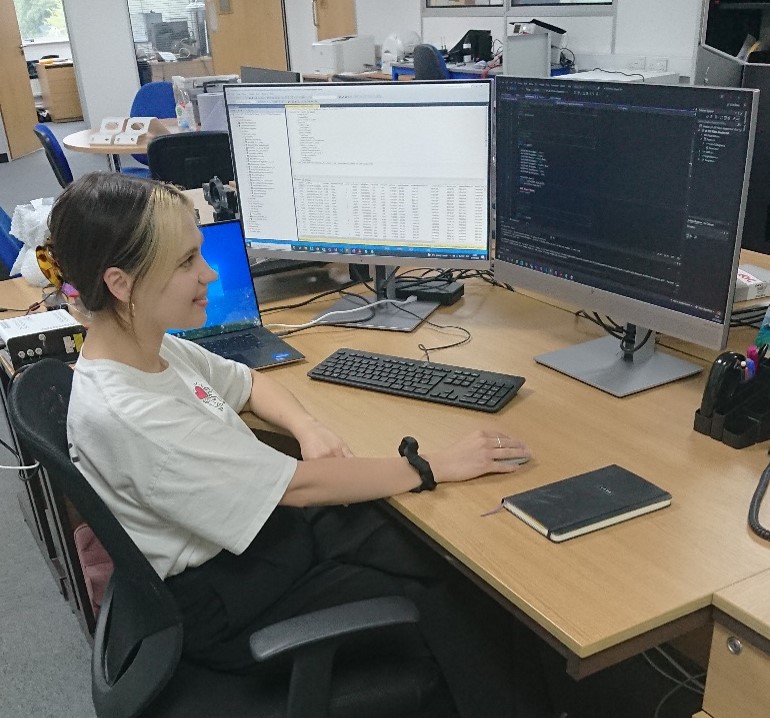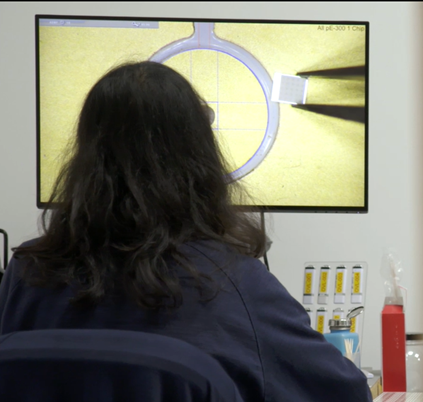Find out about the people behind the technology with a day in the life of Evie Cox.
Evie is one of our experts in manufacturing microscope Illumination Systems, and she shares her recent career progression using her new found skill in coding to advance product testing as a junior software developer.

How are you involved in building Illumination Systems?
After joining the Production Team at CoolLED about three years ago, I initially focused on building the pE-4000. During particularly busy times, I also helped to build the pE-300 Series, until my colleague Yura suggested I might be good at building the LED Array Modules (LAMs).
What is involved in LAM building?
Building a LAM requires a high level of dexterity and an eye for detail, and the skill takes a long time to master. Using tweezers and working under the microscope, a 1mm2 LED is first placed on a small copper substrate (see image below). The wire bonding then involves working with wire the same thickness as a strand of hair. Each LAM is carefully tested, and this is where I came across coding.
What made you move from manufacturing to software development?
When our Engineering Manager, Western King, developed a LAM test studio to enhance quality control and further minimise the variance of LED power output, he was busy working on the software code while I was testing the LAMs. I became curious about the coding, and Western kindly offered to train me on C# which is the coding language we use here at CoolLED. Combining training from Western and working during my spare time, this developed into an invitation to join Engineering as a junior software developer. Now I’m still building and testing LAMs, while gradually handing over the reins to one of our new starters (Anna) who will replace me as the LAM specialist when I join Engineering full time.
What do you enjoy most about coding?
There is logic and detail behind coding, which must be in the right structure. I find a lot of satisfaction in writing code, where every detail matters and it requires a high level of precision. You must apply the right logic to everything you do; it either works or it doesn’t, and it’s elating when it does. It’s a new challenge which is pushing me in a different way, and it’s so exciting that it doesn’t feel like work. There is so much support and everyone wants to help me achieve.

Which projects will you be involved with in the future?
We have an increasing emphasis on integrating automation into processes for manufacturing and product testing, and my focus will be writing software for this. Automation not only enables our production team to increase their efficiency, but also improves the quality of our products. For example, we have invested in a new testing rail, which sets the right focal length for each wavelength, and while it used to take me an hour to test 50 LAMs, I can now do this in 20 minutes. The other project I’m involved in is streamlining the capture of spectral data for new products and making this easier for the operator.




